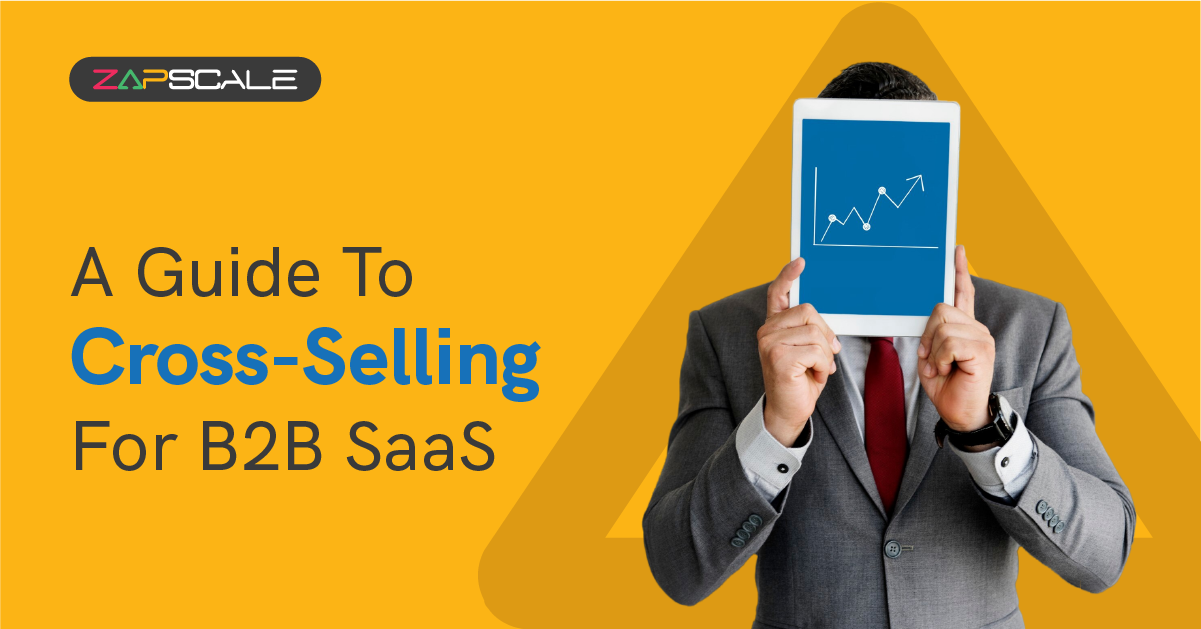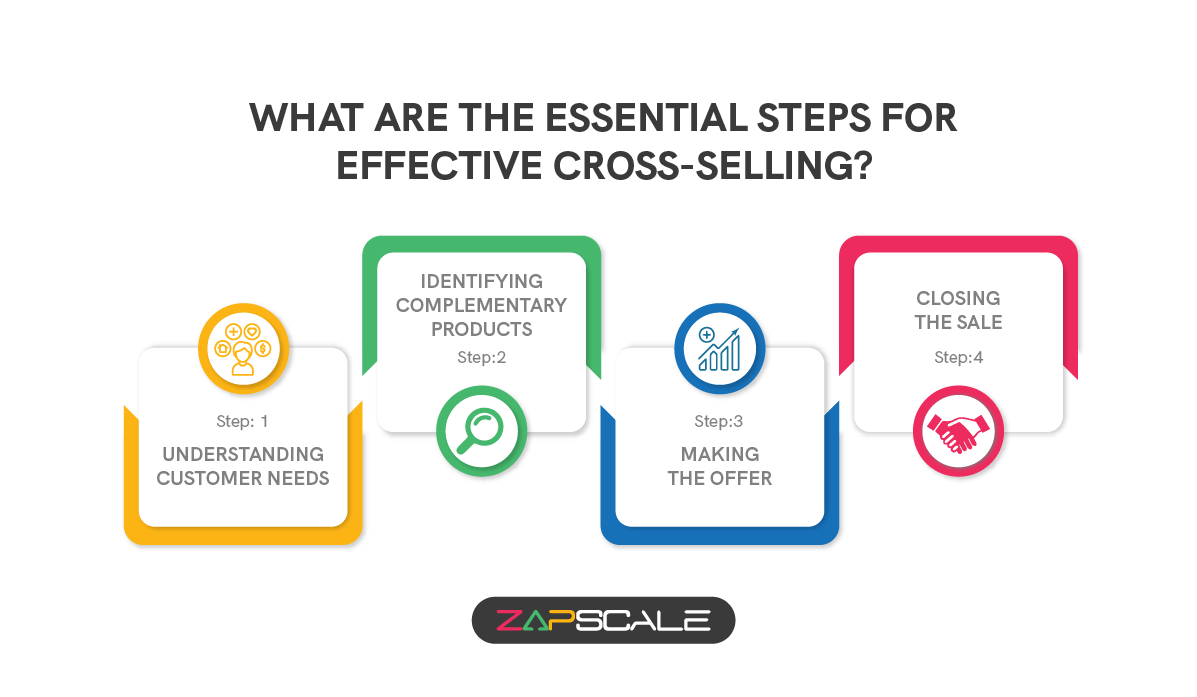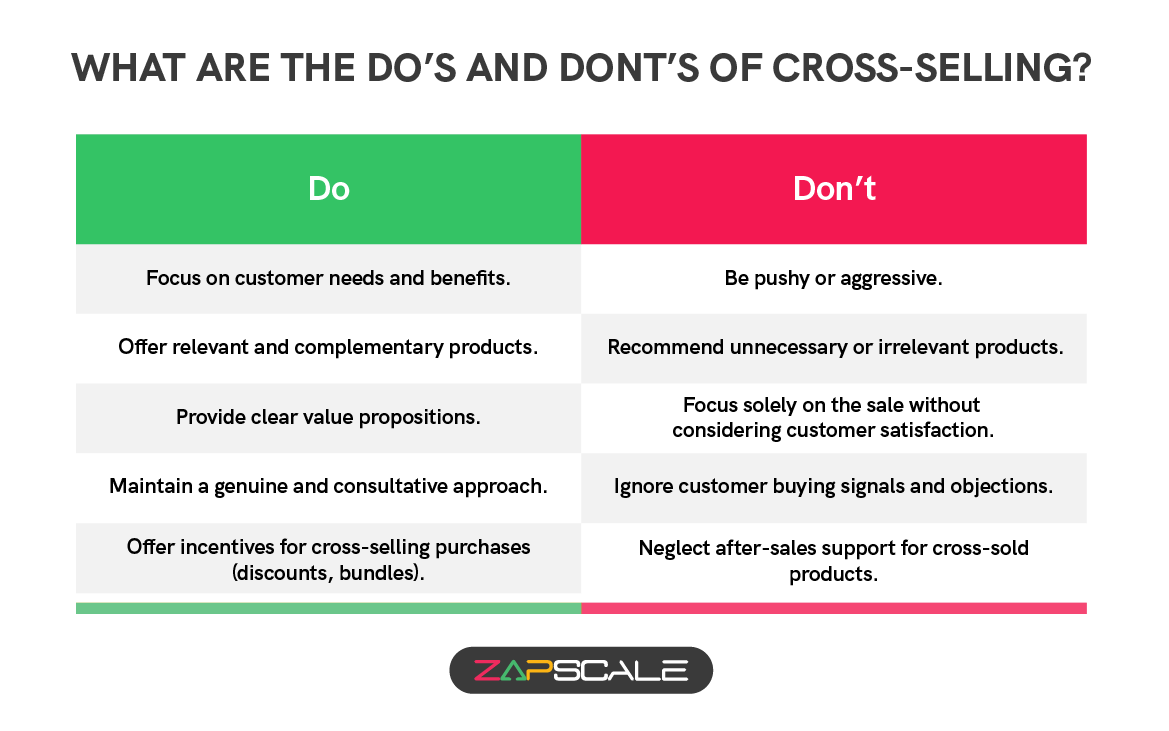CATEGORY > Customer Expansion
Your Essential Cross-Selling Playbook

Introduction
Ever feel like you're leaving money on the table? You know, that moment after a customer buys something, you think, "Wait, they might also need..."? That's the power of cross-selling!
It's not about being pushy, it's about offering solutions that genuinely enhance your customers' experience.
Imagine buying a new phone – a case, screen protector, and headphones all make perfect sense, right? Cross-selling is about suggesting relevant add-ons that make their initial purchase even more useful and enjoyable.
But how do you do it effectively?
Whether you're a seasoned salesperson or just starting, this guide will unlock the secrets of cross-selling for businesses of all sizes. In this article, we'll dive deep into the world of cross-selling, exploring how it works and the steps you can take to implement it effectively.
We'll also unpack the advantages and disadvantages to consider, and explore how to tailor your cross-selling approach specifically for B2B businesses. So, get ready to transform those "one-time sales" into thriving, long-lasting customer relationships!
What is Cross-Selling?
Cross-selling is a technique that involves offering additional, complementary products or services to an existing customer base. By identifying and presenting products that enhance the value of the customer's initial purchase, SaaS businesses aim to increase customer satisfaction, loyalty, and, ultimately, revenue.
Successful cross-selling requires a deep understanding of the customer's journey, pain points, and challenges. By carefully analyzing customer data and usage patterns, SaaS companies can identify opportunities to introduce products or services that seamlessly integrate with the customer's existing solution.
How Cross-Selling Works And What Are The Steps To Follow?
Cross-selling works by understanding your customer's needs and then offering them additional products or services that complement their initial purchase.
Here's a breakdown of the key steps:

1. Understanding Customer Needs
a. Active Listening
Pay close attention to what the customer is buying and any hints they drop about their needs or goals.
b. Purchase History
If you have access to a customer's past purchases, it can reveal buying patterns and potential areas for relevant add-ons.
2. Identifying Complementary Products
a. Product Knowledge
Sales/Customer Success representatives need a deep understanding of the entire product line to identify items that naturally pair well with the initial purchase.
b. Value Proposition
The additional product should solve a related problem or enhance the customer's experience with the first product.
3. Making The Offer
a. Personalization
Tailor your suggestion to the specific customer's situation. Don't offer a generic add-on that might not be relevant to their needs.
b. Focus On Benefits
Frame the cross-sell as a way to improve their experience with the initial purchase. Explain how the additional product adds value and solves a problem.
c. Inconspicuous Approach
Avoid being pushy or making the customer feel pressured. A consultative approach that highlights the benefits is key.
4. Closing The Sale
a. Address Concerns
Be prepared to answer questions and address any objections the customer may have about the additional product or its price.
b. Incentives
Consider offering discounts or bundles that make the cross-sell purchase more attractive.
What are the Advantages and Disadvantages of Cross-Selling?
Advantages of Cross-Selling
1. Increased Customer Lifetime Value (CLTV)
By encouraging customers to spend more on complementary products or services, you extend their value to your business. Every additional purchase contributes to a higher CLTV, a key metric for long-term profitability.
2. Stronger Customer Relationships
Effective cross-selling demonstrates that you care about a customer's specific needs. When you suggest relevant add-ons that enhance their initial purchase, it fosters trust and strengthens the customer relationship.
By addressing related needs and providing a comprehensive solution, you increase their overall satisfaction with your brand.
3. Increased Sales And Revenue
The most direct benefit is the immediate boost in sales and revenue generated by successful cross-selling. Every additional product sold translates to a higher bottom line.
4. Improved Inventory Management
Cross-selling can help move slower-selling items by pairing them with popular products. This leads to a more efficient inventory turnover and frees up capital for new offerings.
5. Enhanced Customer Insights
The process of identifying relevant cross-sell opportunities can reveal valuable customer data and buying patterns. This data can be used to personalize future marketing efforts and product development.
Disadvantages of Cross-Selling
1. Perceived As Pushy
If the salesperson is overly aggressive or suggests irrelevant products, customers might feel pressured or annoyed. This can damage the customer relationship and lead to a negative perception of your brand.
2. Reduced Customer Satisfaction
Cross-selling unnecessary or incompatible products can backfire. Customers might end up feeling like they were tricked into buying something they don't need, leading to dissatisfaction and potentially customer churn.

3. Ineffective Sales Training
Without proper training on effective cross-selling techniques, salespeople might struggle to identify relevant products, present the value proposition poorly, or struggle to address customer concerns. This can lead to missed opportunities and lower sales.
4. Focus on Short-Term Gain
Overly focusing on cross-selling to boost immediate sales can come at the expense of building long-term customer relationships. Customers may feel like you prioritize profit over their needs.
Do's and Don'ts of Cross-Selling


How Can You Do Cross-Selling For A B2B SaaS Company?
Cross-selling is a powerful tool for B2B SaaS companies to expand their customer relationships and increase revenue.
Here's a breakdown of how to effectively cross-sell in this space:
1. Understanding Your Customers
Deep Product Knowledge
Your sales team needs a comprehensive understanding of your entire SaaS platform, including all features and functionalities.
Customer Segmentation
Group your customers based on industry, company size, or usage patterns. This allows you to tailor your cross-selling approach to specific needs.
Customer Data Analysis
Analyze customer data like usage behavior and purchase history to identify potential cross-sell opportunities. Tools like customer relationship management (CRM) systems can be helpful here.
2. Identifying Cross-Sell Opportunities
Feature Bundles
Create feature bundles that combine the initially purchased product with complementary features that address specific customer needs within a segment.
Usage-Based Upsells
For tiered subscription plans, identify customers who are nearing the limits of their current plan and suggest an upgrade that includes additional features they might benefit from based on their usage.
Integrations and Partnerships
Explore integrations with other relevant SaaS tools that your customers might use. You can offer bundled pricing or co-marketing initiatives with these partners.
3. Making the Cross-Sell Offer
Focus On The Value Proposition
Clearly explain how the additional features or integrated tools will enhance the customer's existing workflow and provide a strong return on investment (ROI).
Customer Success Stories
Showcase real-world examples of how other customers in their industry have benefited from the cross-sell offering.
Freemium Or Trial Periods
Consider offering limited-time free trials or freemium versions of additional features to allow customers to experience the value before committing to a purchase.
Top B2B Companies Mastering the Art of Cross-Selling
1. HubSpot
This marketing and sales platform employs a tiered subscription model.
They might cross-sell features like marketing automation tools to customers initially signing up for a basic social media management package. This caters to their evolving needs as their business grows.
2. Salesforce
The CRM giant cross-sells additional modules like Salesforce Einstein (AI for sales) or Salesforce CPQ (configure, price, quote) to existing customers using their core CRM platform.
These add-ons address specific needs within the sales process and enhance overall sales efficiency.
3. Zoom
The popular video conferencing platform offers additional features like Zoom Rooms for conference room setups or Zoom Phone for integrated business phone functionalities.
These cross-sell opportunities cater to companies seeking a more comprehensive communication solution.
4. Slack
The popular workplace communication tool might suggest integrations with project management software like Asana or Trello to customers on their basic plan.
These integrations streamline workflow and enhance collaboration within teams.
5. DocuSign
The e-signature leader might cross-sell DocuSign CLM (Contract Lifecycle Management) to customers already using their basic e-signature service.
This caters to businesses with complex contract management needs.
Conclusion
In conclusion, cross-selling, when executed thoughtfully, can be a game-changer for businesses of all sizes. By understanding your customers' needs and purchase history, you can offer them complementary products or services that genuinely enhance their experience.
This not only leads to increased revenue and customer lifetime value, but also fosters stronger customer relationships built on trust and a sense of partnership.
However, it's crucial to remember that cross-selling is an art, not a force.
The key lies in striking a balance between maximizing sales opportunities and prioritizing customer satisfaction.
FAQs
1. Is cross-selling the same as upselling?
Upselling involves offering a higher-priced version of the same product category. Cross-selling, on the other hand, focuses on offering complementary products from different categories.
2. What are. some metrics to track cross-selling success?
Track metrics like average order value, conversion rates for cross-sell offers, and customer lifetime value.
3. How can technology help with cross-selling?
CRM systems and customer data platforms provide valuable insights to suggest relevant cross-sell opportunities.
ABOUT THE AUTHOR
Popular from Customer Expansion
Quality Content,
Straight To Your Inbox!
Subscribe for the latest blogs, podcasts, webinars, and events!

Write a Blog
If you have experience in CS and
a flair for writing, we’d love to
feature you.
Write to us on
hello@zapscale.com





